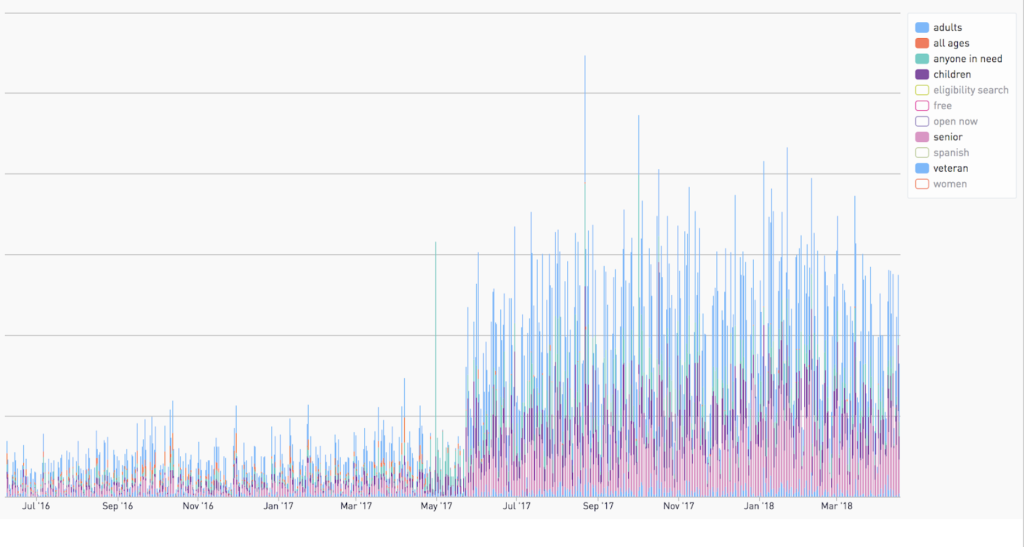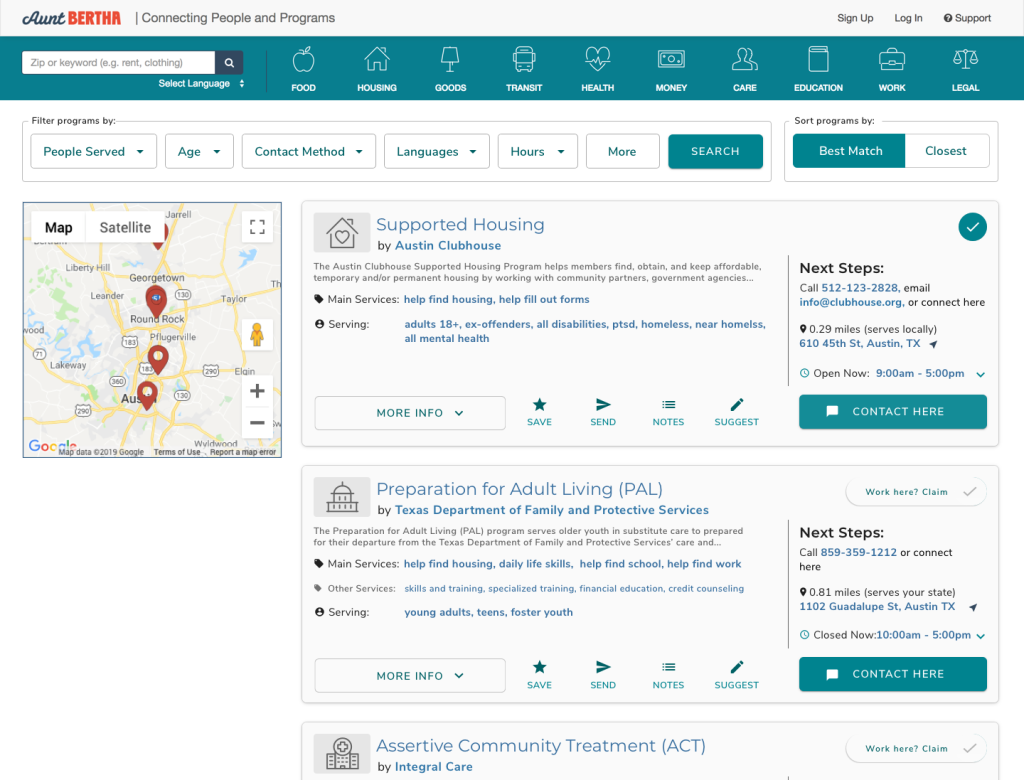Many social services have very narrow and specific eligibility: WIC for women, VAs for military veterans, Headstart for children. When users search for services that can fill their personal needs, filters are the very best way to identify which programs they would be eligible for.
When I first came to Auntbertha.com, we had very little data on how people were using our program filters because very few people were finding them. Filters are the best way for someone to narrow in on the programs most likely to serve them.
My first filter redesign simply increased visibility and usability of our available filters, so that we could start collecting data on how filters would be used. From that experiment, I discovered that:
- Certain filters were more helpful that others
- Certain filters were more broadly applicable than others, and
- Certain filters didn’t return many programs at all.
- Many users were filtering when sorting would have given them more useful results
- The key take-away was that the most clicked-on filters provided the least relevant results.

I made some minor tweaks to the page that resulted in a huge decrease in usage for the least useful filters, but a bigger redesign was needed to address all the problems.
Based on the new data coming in, I redesigned filters to:
- Highlight the most useful filters, and de-emphasize less relevant filters
- Decrease the amount of above-the-fold space that filters took up
- Make sort just as visible as filter

At the same time I redesigned how our search algorithm treated filters.
Challenge: Our filter interface was simple, and we needed to and/or them intelligently without a user needing to tell us what they meant.
When I first arrived, our system just “OR”d all filters. Sometimes this made sense, but often it didn’t. I dived deep into our program data to learn which kind of filters would be most useful to AND instead. For example, if someone is looking for LGBTQ programs that serve seniors, an LGBTQ program that serves teens is not useful.
I also added an element to our relevance scoring that boosted programs which met more than one of your OR’d criteria. For an immigrant family experiencing food scarcity, programs that give food to immigrants and programs that give food to families will both be useful, but programs that focus on immigrant families will be the most useful of all!
Challenge: People’s personal attributes should persist across all of their searches, but persistent filters were more likely to give people zero results.
When I first arrived, our system forgot the filters you’d used once you left the page you were on. But a veteran searching for veterans programs should keep that context whether they are looking for Food Delivery or for a Food Pantry, because those programs will always be the most useful. However, this presented some problems – keeping filters across searches resulted in more zero results. To counteract this problem, I designed a “possible matches” search. If a user’s filters resulted in very few results, we showed programs that met ANY of their criteria, as well as programs that serve everyone.